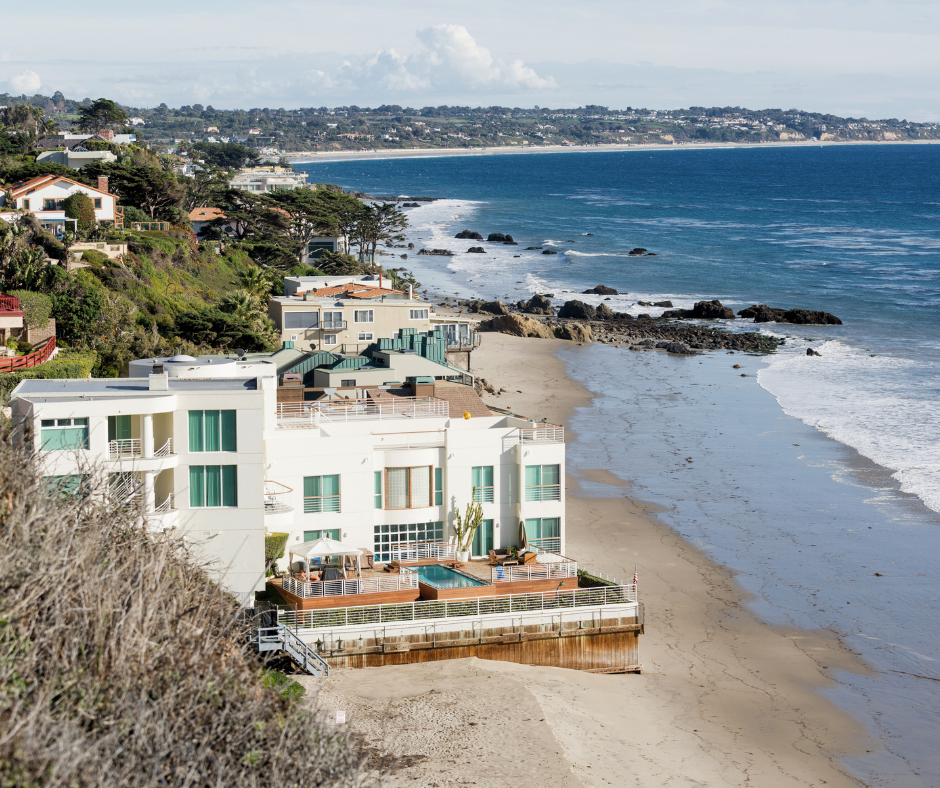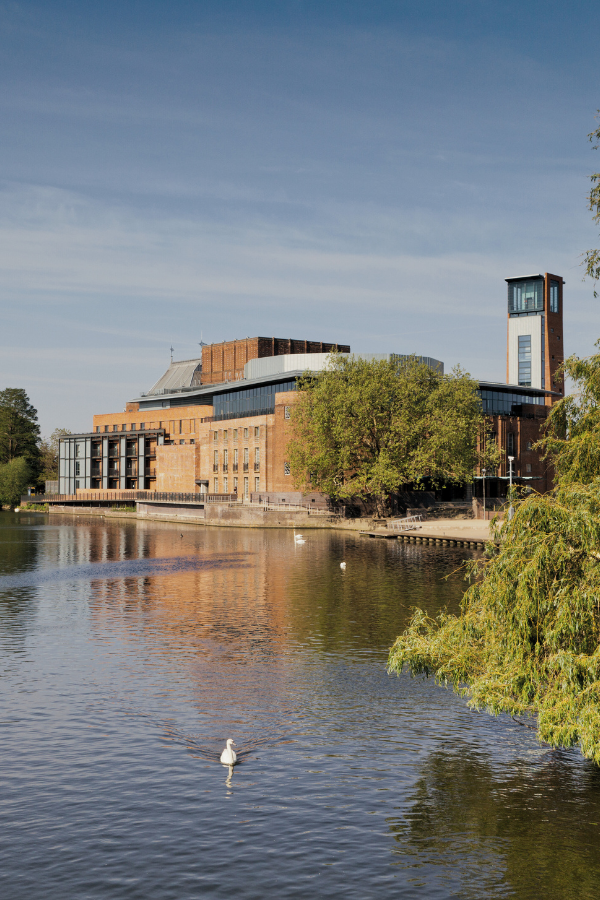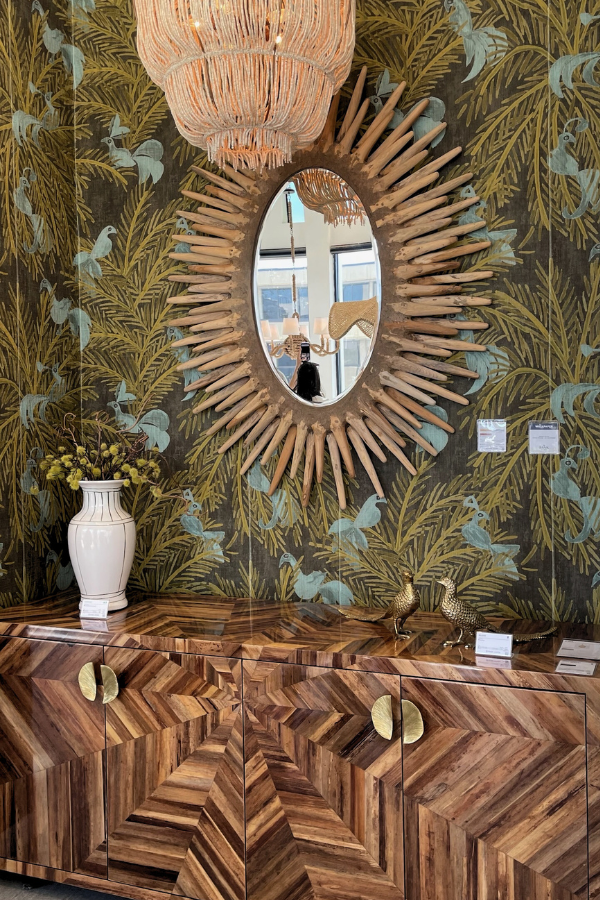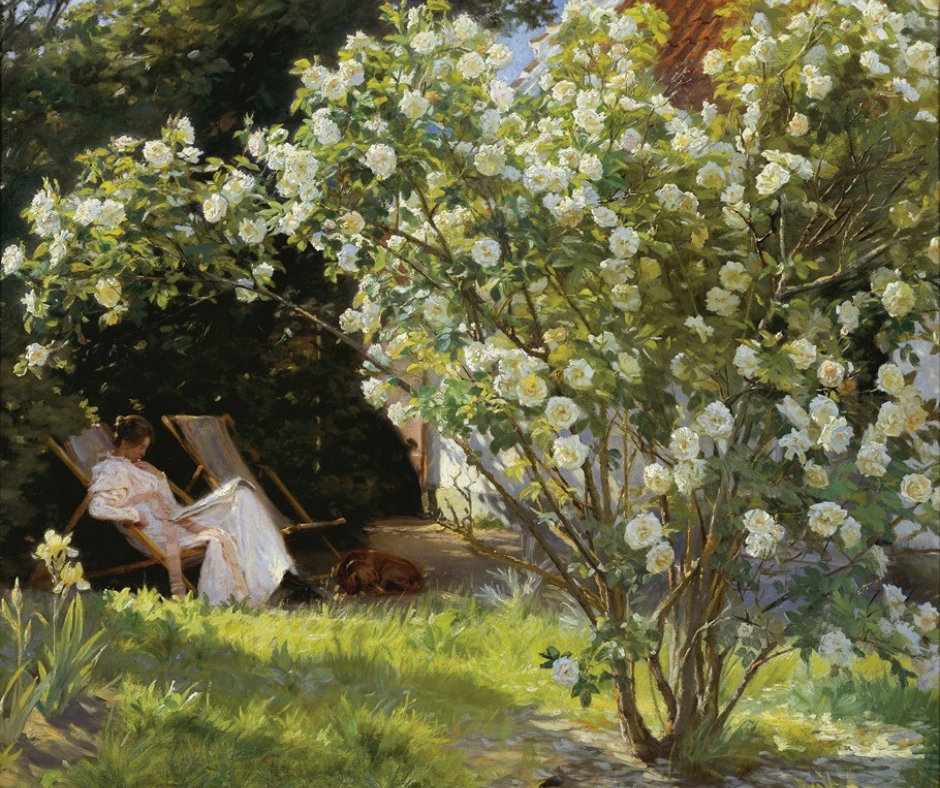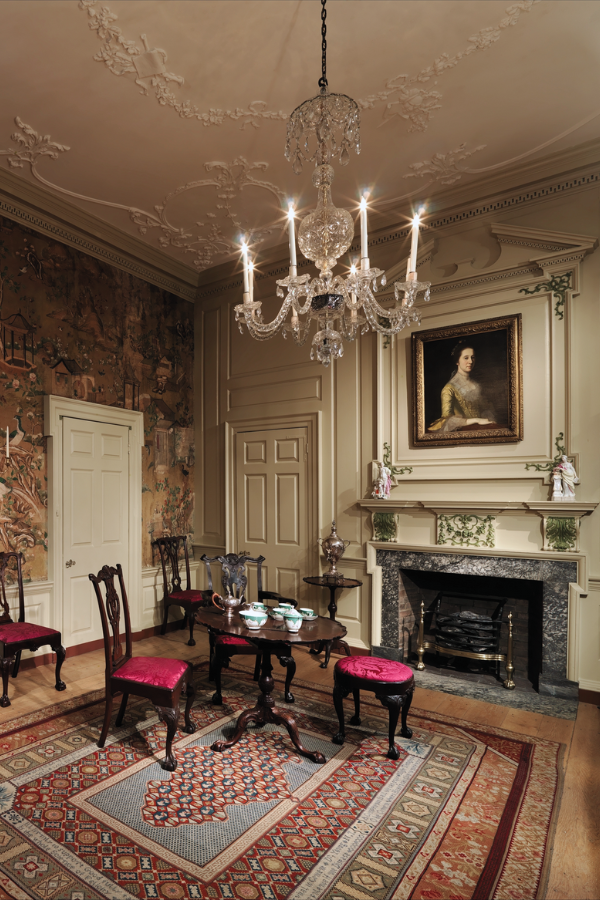
From Syon to Drayton: Hallmarks of Georgian Interior Design
Summary
Reflection Questions
Journal Prompt
Reflecting Enlightenment values of order and rationality, Georgian interiors are characterized by elegant moldings, paneled walls, and ornate plasterwork inspired by Roman and Greek architecture. The use of harmonious colors alongside graceful furniture designs with elaborate carvings epitomizes the refined elegance and timeless appeal of Georgian design. From Stourhead in Wiltshire to Castletown House in Ireland to Kedleston Hall in Derbyshire to Mount Vernon in Virginia, let’s explore iconic examples of Georgian interior design.
All About Georgian Architecture and Interior Design
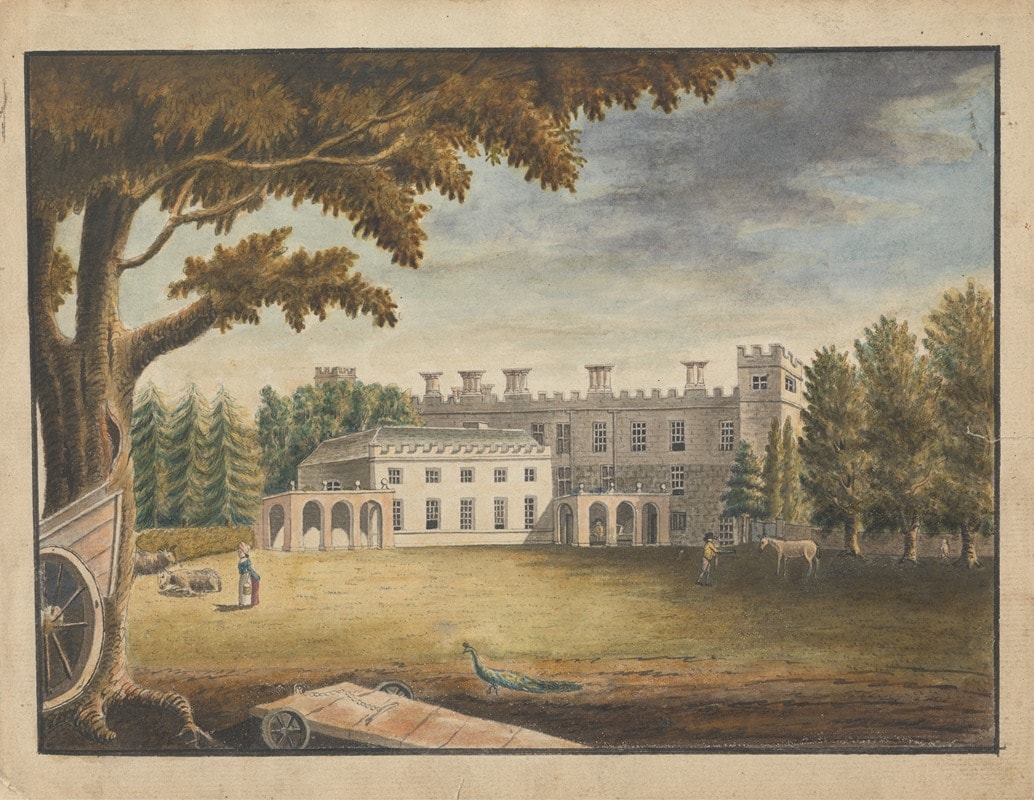
Beginning in 1714 and ending somewhere around 1830, the Georgian era in British interior design is characterized by its emphasis on symmetry, proportion, and classical architecture, reflecting the period’s broader Enlightenment values of order and rationality.
Interiors of Georgian houses and public buildings typically featured elegant moldings, paneled walls, and ornate plasterwork, inspired by classical Roman and Greek architecture. The use of harmonious colors, including soft pastels and rich tones, was prevalent in Georgian buildings, while furniture design emphasized graceful lines and elaborate carvings.
Hallmarks of Georgian Interior Design
Symmetry and Proportion
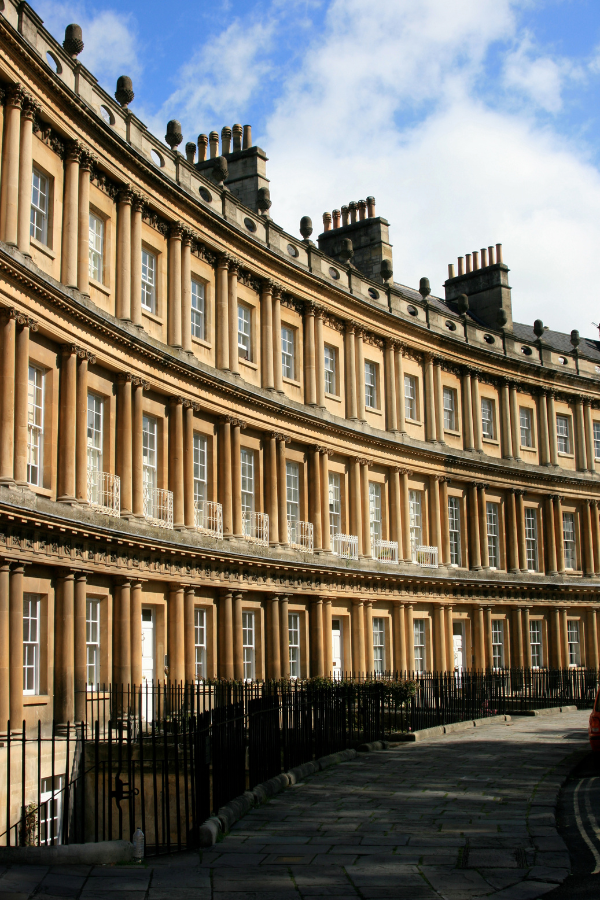
Georgian interior design places a strong emphasis on symmetry and proportion, inspired by classical architecture from ancient Greece and Rome. This principle is evident in the balanced layouts of rooms, where windows, doors, and decorative elements are meticulously aligned to create a harmonious and orderly appearance. The focus on proportion ensures that each element of the design is in scale with the others, contributing to a sense of balance and refinement throughout the space.
Elegant Moldings and Paneling
Elegant moldings and paneling are key features of Georgian interiors, adding depth and detail to walls and ceilings. Intricate moldings, including cornices and dado rails, frame walls and emphasize architectural features. Paneled walls, often painted in soft, muted tones, create a textured and sophisticated backdrop. These elements not only enhance the visual appeal but also reflect the high level of craftsmanship typical of the Georgian period.
Ornate Plasterwork
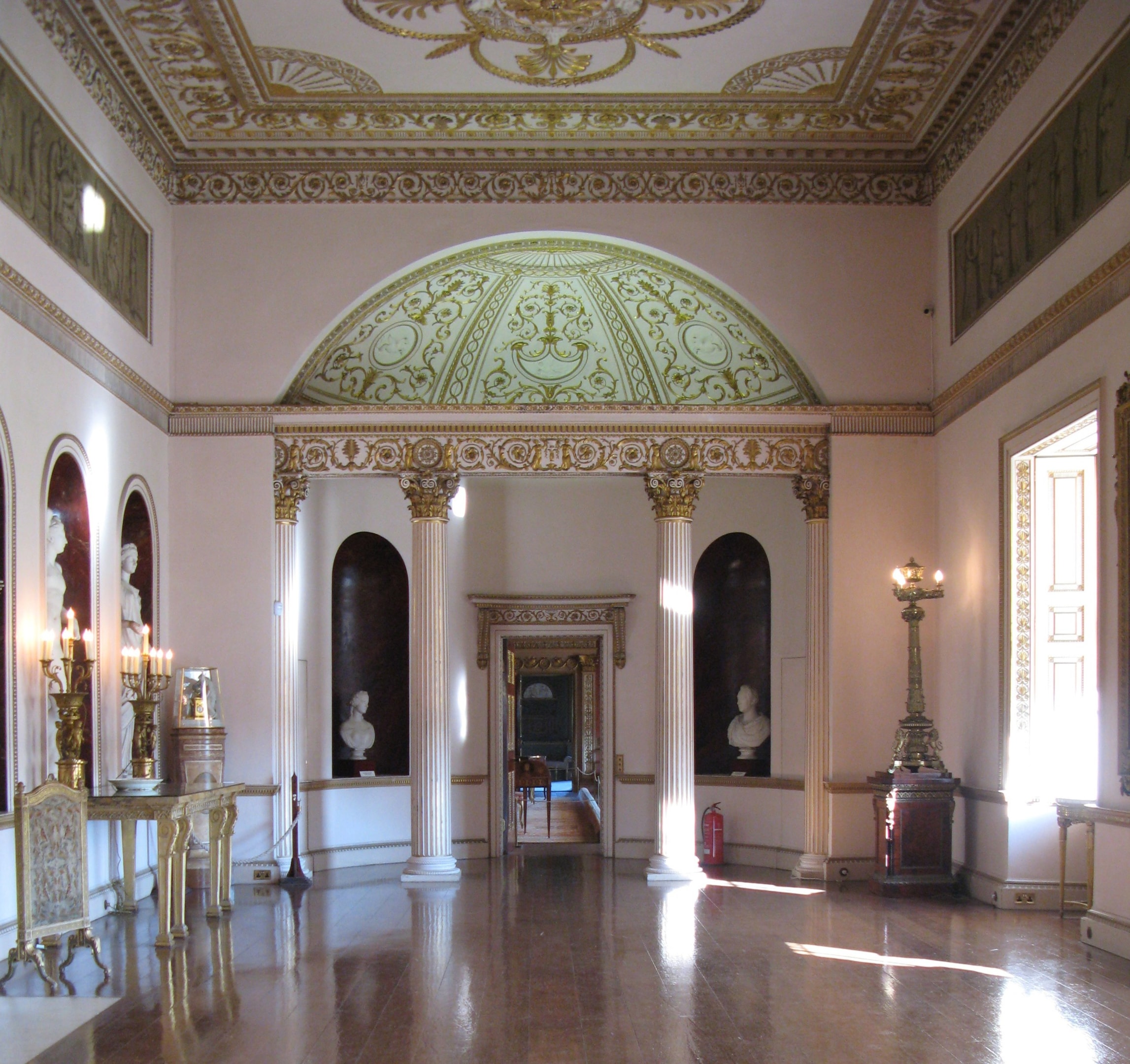
Ornate plasterwork is a hallmark of Georgian interior design, featuring decorative ceilings adorned with ceiling roses, friezes, and cornices. These plaster elements often incorporate classical motifs such as acanthus leaves, urns, and scrolls, adding an element of grandeur and elegance to the interiors. The detailed and elaborate nature of the plasterwork showcases the skill of artisans and enhances the overall aesthetic of Georgian spaces.
Rich Colors and Textiles
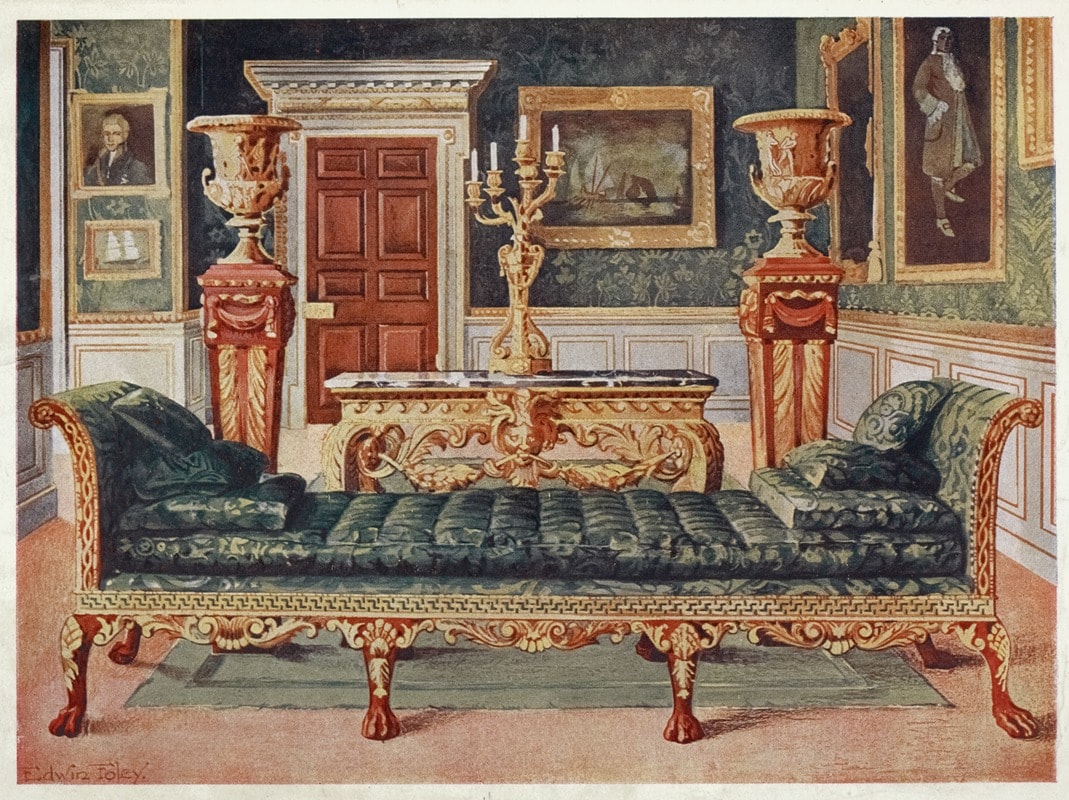
Georgian interiors are known for their use of rich, deep colors such as reds, greens, and blues, which add warmth and luxury to the spaces. These colors are often complemented by luxurious fabrics like silk, velvet, and damask, used in upholstery, curtains, and wall coverings. The combination of rich hues and sumptuous textiles creates an opulent and inviting atmosphere, reflecting the period’s taste for elegance and comfort.
Classical Motifs
Classical motifs are a defining characteristic of Georgian interior design, drawing inspiration from ancient Greek and Roman art and architecture. Decorative elements such as urns, columns, and acanthus leaves are commonly found in moldings, furniture, and accessories. These motifs not only add a touch of classical beauty but also emphasize the era’s reverence for classical antiquity and its principles of order and symmetry.
Fine Furniture

Georgian furniture is renowned for its high-quality craftsmanship and refined lines. Pieces designed by notable designers like Thomas Chippendale often feature intricate carvings, elegant proportions, and the use of high-quality woods such as mahogany and walnut. The furniture’s design emphasizes both functionality and aesthetic appeal, with a focus on creating pieces that are both beautiful and durable.
Fireplaces as Focal Points

In Georgian interiors, fireplaces serve as central features in rooms, often with elaborate mantels and surrounds. These fireplaces are designed to be visually striking, frequently adorned with intricate carvings and classical motifs. The fireplace serves not only as a source of warmth but also as a key decorative element, around which the rest of the room’s design is oriented. This focus on the fireplace reflects the importance of both functionality and elegance in Georgian design.
Subperiods in Georgian Architecture and Interior Design
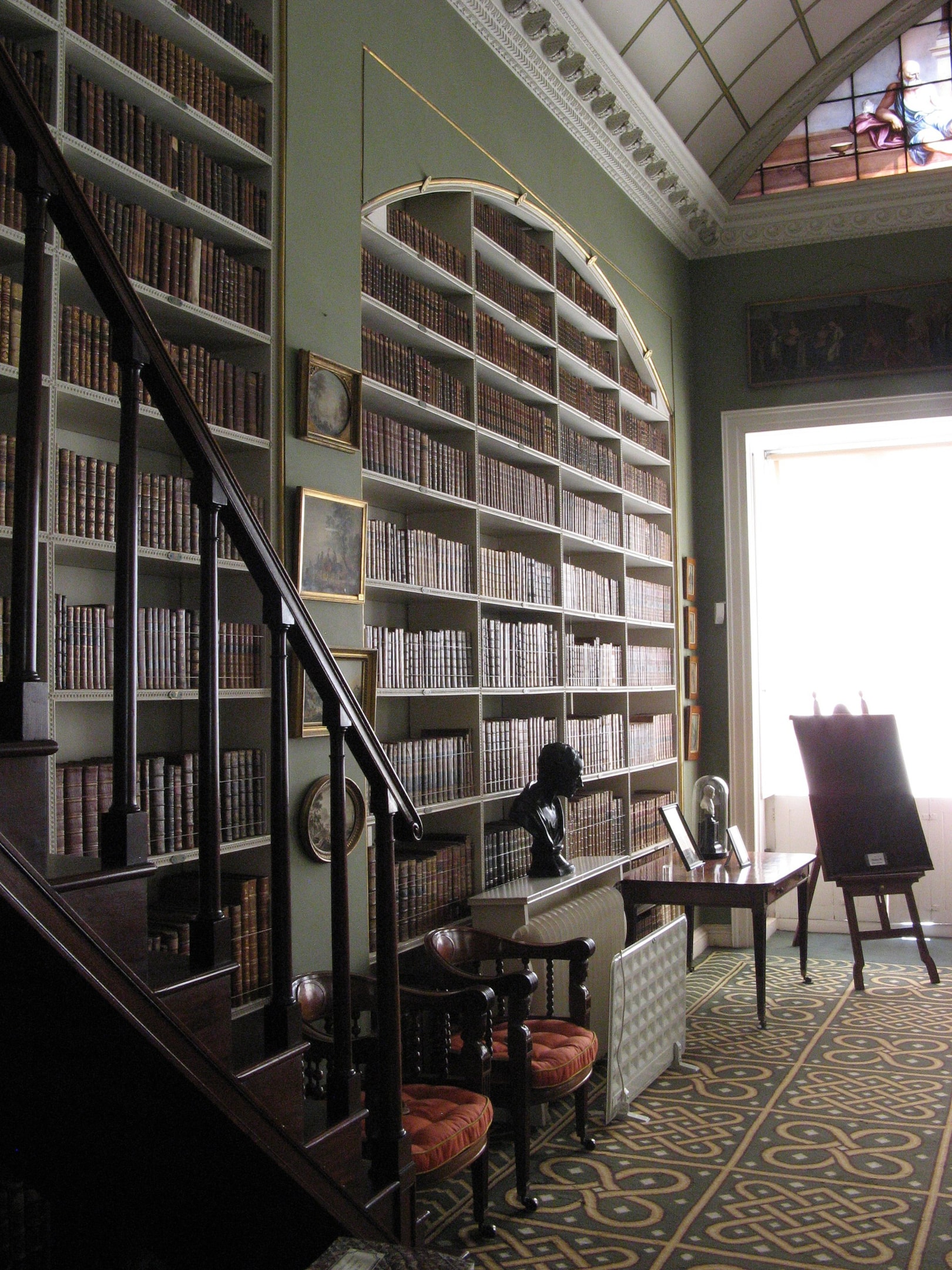
The Georgian period in British history spans from 1714 to 1830, encompassing the reigns of the first four Hanoverian kings of Great Britain: George I, George II, George III, and George IV. However, there were several subperiods of the Georgian era, each with its own distinct architectural and interior design style.
Early Georgian (1714-1760)

The Early Georgian period was heavily influenced by Palladian architecture, inspired by the works of Andrea Palladio. This period emphasized symmetry and classical proportions, often using brick with stone detailing to create a balanced and harmonious appearance. Interiors were relatively restrained, focusing on elegance and refinement.
Iconic Early Georgian buildings include Castletown House of County Kildare in Ireland, and Kedleston Hall in Derbyshire (designed by James Paine and Matthew Brettingham, with later contributions by Robert Adam). Designed by William Kent and noted for its Palladian style and classical details, Holkham Hall in Norfolk is another example of the Early Georgian style.
Mid-Georgian (1760-1790)
During the Mid-Georgian period, the influence of architects like Robert Adam became prominent. This era saw more decorative interiors, with elaborate plasterwork and the introduction of neoclassical elements. Adam’s designs often included intricate ceilings, ornate fireplaces, and coordinated color schemes, blending classical motifs with contemporary tastes.
Mid-Georgian interiors include Stourhead in Wiltshire (designed by Henry Flitcroft), Russborough House in County Wicklow, Mount Vernon in Virginia, and Drayton Hall in South Carolina. The latter two—both in the United States—exhibit the symmetry and classical details typical of early and mid-Georgian architecture in the American colonies. In particular, The New Room—a large, two-story space used for entertaining, with light teal green walls and neoclassical decorations—is absolutely iconic. Bear in mind that not all of Mount Vernon is considered Mid-Georgian, as it was built over many decades.
Late Georgian (1790-1830)

The Late Georgian period marked the transition to more ornate and sophisticated designs, heavily influenced by Neoclassicism and the beginning of the Regency style. Interiors became more elaborate, with greater use of Greco-Roman motifs, lighter and more elegant furnishings, and increased decorative details. This period reflected a growing interest in luxury and refinement, setting the stage for the opulence of the Regency era.
Fuel your creative fire & be a part of a supportive community that values how you love to live.
subscribe to our newsletter
*please check your Spam folder for the latest DesignDash Magazine issue immediately after subscription

Late Georgian homes include Kenwood House in London, Osterley Park in London, Chatsworth House in Derbyshire, Harewood House in Yorkshire, and Syon House in London. Designed by John Carr and Robert Adam, Harewood House is particularly emblematic of the era, with its neoclassical drawing room and elegant entrance hall. Syon Hall also features grand interiors with classical columns and intricate ceilings. Designed by British architect John Wood the Younger, the Royal Crescent in Bath is another notable example—though not a traditional house.
Regency (1811-1820)
The Regency period (1811-1820) is a sub-period within the broader Georgian era (1714-1830). During the Regency, George IV ruled as Prince Regent due to King George III’s illness. The architectural and design styles of the Regency period evolved from the earlier Georgian styles, becoming more elaborate and influenced by French, Greco-Roman, and Egyptian motifs. The Regency period can be considered both a distinct period and a subperiod within the broader Georgian era.
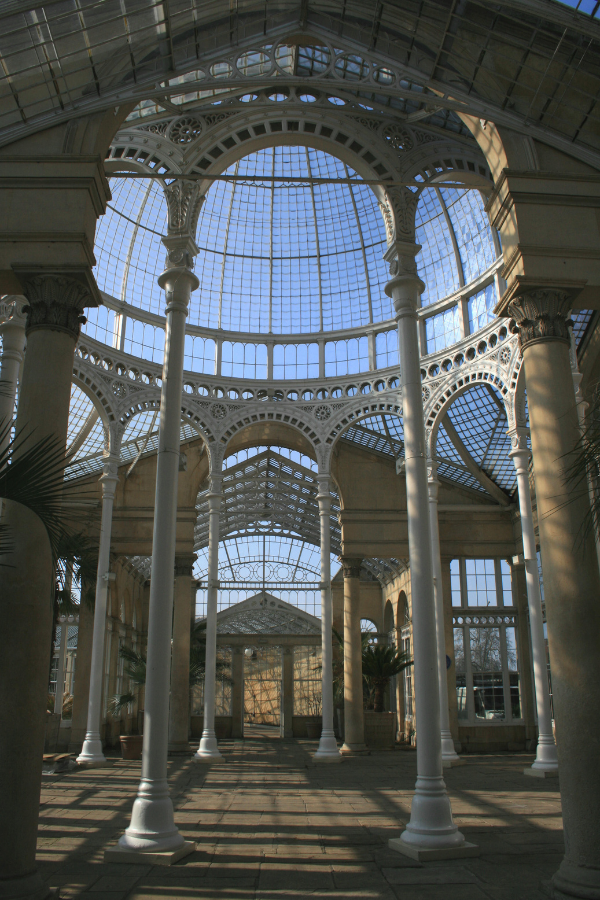
Key characteristics of Regency design include the use of lighter, more elegant furnishings, increased use of mirrors and decorative details, and a focus on creating sophisticated and opulent interiors. Fans of the Netflix series Bridgerton might recall the show’s Regency-style interiors and Georgian country houses.
Georgian Revival (late 19th-early 20th centuries)

The Georgian Revival, also known as Neo-Georgian, primarily took place in the late 19th and early 20th centuries. This architectural style sought to revive the elements of Georgian architecture from the 18th century, emphasizing symmetry, proportion, and classical details.
It was particularly popular in the United Kingdom and the United States during the 1920s and 1930s, continuing to influence residential and institutional buildings well into the mid-20th century. The revival was marked by the use of red brick, white trim, and other traditional Georgian design features.
Influential Figures and Movements
Prominent designers like Robert Adam were instrumental in shaping Georgian interiors. Adam’s work is known for its classical motifs and integrated architectural elements, setting a high standard for design during this period.
His influence extended to furniture design, with pieces often crafted by respected cabinetmakers like Thomas Chippendale, whose work remains iconic. Chippendale’s designs, documented in his famous book “The Gentleman and Cabinet Maker’s Director,” blended Gothic, Rococo, and Chinese influences, making them highly sought after.
Key Companies and Artists
Several companies and artisans emerged during this era, contributing to its distinctive style. Josiah Wedgwood, for instance, revolutionized ceramics with his neoclassical designs, highly prized for their elegance and craftsmanship. Additionally, wallpaper designs by companies like Zuber et Cie became popular, often featuring intricate patterns and scenic landscapes that added a decorative element to Georgian homes.
Art and Decoration
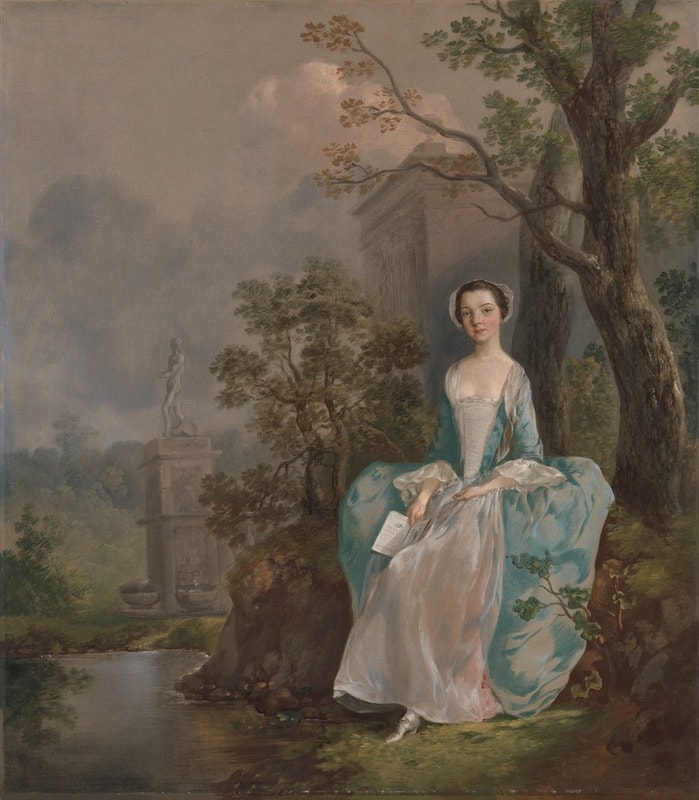
Artwork also played a significant role in Georgian style interiors. Portraits and landscapes by artists such as Thomas Gainsborough and Sir Joshua Reynolds adorned many homes, reflecting the era’s taste for refined and cultured aesthetics. These works complemented the overall design ethos, creating spaces that were both sophisticated and inviting.
Final Thoughts on Georgian Interior Design

Georgian interior design, spanning from 1714 to 1830, is celebrated for its emphasis on symmetry, classical proportions, and refined elegance. Hallmarks of this style include intricate moldings, elegant paneling, and ornate plasterwork, all contributing to the harmonious and balanced aesthetics. Rich colors, luxurious textiles, and classical motifs adorned interiors, while high-quality furniture from designers like Thomas Chippendale added sophistication. Fireplaces served as central decorative elements, underscoring the era’s blend of functionality and beauty. Georgian design’s timeless appeal continues to influence and inspire contemporary interiors today.




